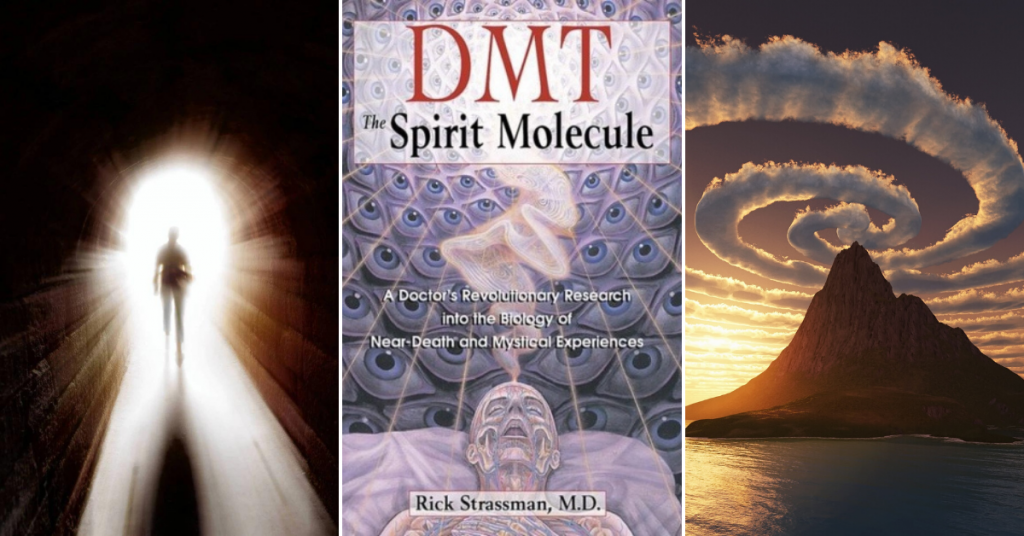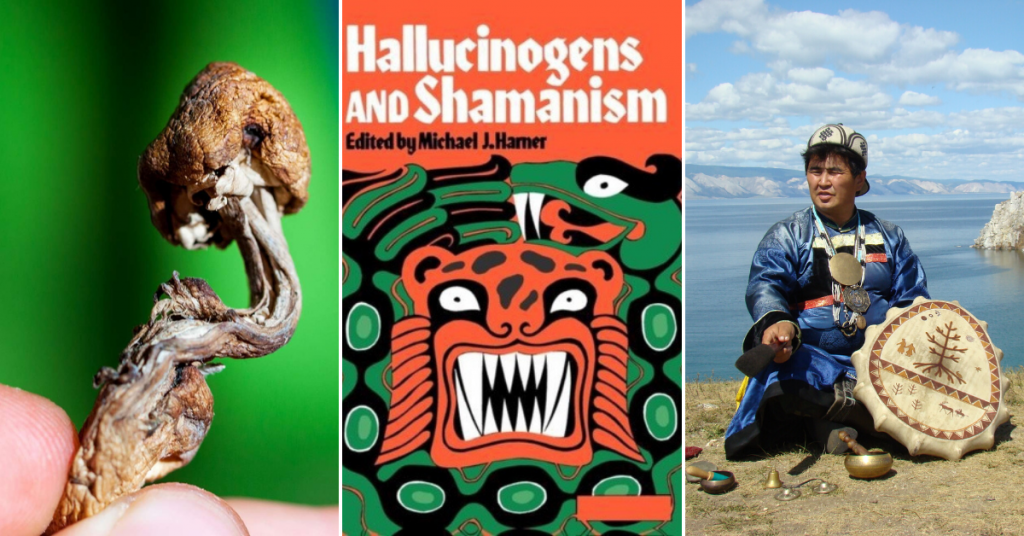DMT: The Spirit Molecule – A Doctor's Revolutionary Research into the Biology of Near-Death and Mystical Experiences
 From 1990 to 1995 Dr. Rick Strassman conducted U.S. Government-approved and funded clinical research at the University of New Mexico in which he injected sixty volunteers with DMT, one of the most powerful psychedelics known. His detailed account of those sessions is an extraordinarily riveting inquiry into the nature of the human mind and the therapeutic potential of psychedelics. DMT, a plant-derived chemical found in the psychedelic Amazon brew, ayahuasca, is also manufactured by the human brain. In Strassman’s volunteers, it consistently produced near-death and mystical experiences. Many reported convincing encounters with intelligent nonhuman presences, aliens, angels, and spirits. Nearly all felt that the sessions were among the most profound experiences of their lives.
From 1990 to 1995 Dr. Rick Strassman conducted U.S. Government-approved and funded clinical research at the University of New Mexico in which he injected sixty volunteers with DMT, one of the most powerful psychedelics known. His detailed account of those sessions is an extraordinarily riveting inquiry into the nature of the human mind and the therapeutic potential of psychedelics. DMT, a plant-derived chemical found in the psychedelic Amazon brew, ayahuasca, is also manufactured by the human brain. In Strassman’s volunteers, it consistently produced near-death and mystical experiences. Many reported convincing encounters with intelligent nonhuman presences, aliens, angels, and spirits. Nearly all felt that the sessions were among the most profound experiences of their lives.
Strassman’s research connects DMT with the pineal gland, considered by Hindus to be the site of the seventh chakra and by René Descartes to be the seat of the soul. DMT: The Spirit Molecule makes the bold case that DMT, naturally released by the pineal gland, facilitates the soul’s movement in and out of the body and is an integral part of the birth and death experiences, as well as the highest states of meditation and even sexual transcendence. Strassman also believes that “alien abduction experiences” are brought on by accidental releases of DMT. If used wisely, DMT could trigger a period of remarkable progress in the scientific exploration of the most mystical regions of the human mind and soul.
Rick Strassman, M.D., is Clinical Associate Professor of Psychiatry at the University of New Mexico School of Medicine.
DMT: The Spirit Molecule, door Rick Strassman, Inner Traditions Bear and Company, 384 pagina’s.
Koop dit boek via bookdepository.com en steun daarmee Stichting OPEN.



 Dr. Sidney Cohen tells with precision and restraint the story of the most interesting among them, LSD, in this book. He has long worked with the drug under hospital conditions and is aware both of its possibilities and its drawbacks. He gives many detailed accounts of LSD feelings in different subjects, and they are fascinating and colorful. He indicates the uses and possible uses of LSD in tapping the unconscious or the abnormal mind, and the usefulness of this for therapists. He discusses LSD in terms of “model psychosis” or “instant Zen.” He treats mystical experiences and visions in terms of what we have learned from these drugs. In a fascinating chapter he discusses hallucinogens for possible war use—they have been considered as incapacitating agents that might limit lethal warfare—and he shows how they too would lead to death. “A pill does not construct character, educate the emotions, or improve intelligence,” writes Dr. Cohen. “It is not a spiritual labor-saving device, salvation, instant wisdom, or a shortcut to maturity. However, it can be an opportunity to experience oneself and the world in a new way—and to learn from it. “The book is free of medical jargon. It tells thestory of LSD—which is full of brilliant color andbright new deep perception—trying to keep the experience intact. We all live in a world of sensation, and it is sensation itself that is illuminated here. Dr. Cohen explores LSD as a possible gateway to the vastness within.
Dr. Sidney Cohen tells with precision and restraint the story of the most interesting among them, LSD, in this book. He has long worked with the drug under hospital conditions and is aware both of its possibilities and its drawbacks. He gives many detailed accounts of LSD feelings in different subjects, and they are fascinating and colorful. He indicates the uses and possible uses of LSD in tapping the unconscious or the abnormal mind, and the usefulness of this for therapists. He discusses LSD in terms of “model psychosis” or “instant Zen.” He treats mystical experiences and visions in terms of what we have learned from these drugs. In a fascinating chapter he discusses hallucinogens for possible war use—they have been considered as incapacitating agents that might limit lethal warfare—and he shows how they too would lead to death. “A pill does not construct character, educate the emotions, or improve intelligence,” writes Dr. Cohen. “It is not a spiritual labor-saving device, salvation, instant wisdom, or a shortcut to maturity. However, it can be an opportunity to experience oneself and the world in a new way—and to learn from it. “The book is free of medical jargon. It tells thestory of LSD—which is full of brilliant color andbright new deep perception—trying to keep the experience intact. We all live in a world of sensation, and it is sensation itself that is illuminated here. Dr. Cohen explores LSD as a possible gateway to the vastness within.